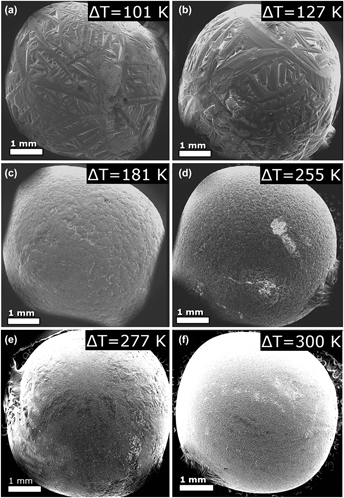Published online by Cambridge University Press: 13 January 2016

Rapid solidification of Al30Si70 alloy was studied via electromagnetic levitation technique. The solidification kinetics and the morphology of the solidification front of the Si phase were analyzed in situ by using a high-speed video camera and subsequent microstructural analysis of as-solidified samples. It shows that solidification of the sample always starts from one point. After that, nucleation continues to proceed at the interface front during growth. The morphology of primary Si transforms from faceted wafer to nonfaceted equiaxed grain and the grain size decreases with increase of undercooling. At small undercooling, the growth velocity of primary Si decreases with time and the floated Si wafers have a trend to agglomerate, while at large undercooling, the nucleation rate decreases with time, which are explained by the fact that silicon content, undercooling and density at the solid–liquid interface change with time in solidification. Finally, the nucleation rate and growth velocity were discussed in combination of classical theory.